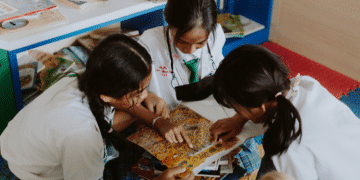The Transformation Challenge: Student Protests and the Quest for Quality Education in South Africa
Historical Context of Higher Education in South Africa
Overview of Apartheid’s Lasting Impact on South African Universities and Educational Access
The apartheid-era policies in South Africa left a profound legacy on the country’s higher education system.
Under apartheid, universities were racially segregated, with white students having access to well-funded institutions while black students were relegated to underfunded “Bantu” universities.
These institutions offered substandard education designed to reinforce the social hierarchy, ensuring black graduates could only participate in the economy as low-skilled workers.
The limited educational opportunities meant that black South Africans were systematically deprived of the skills necessary for upward mobility, effectively sustaining the cycle of poverty and economic domination by the white minority.
Transition Challenges in Post-1994 Democratic South Africa
With the fall of apartheid in 1994, South Africa faced the monumental task of transforming its higher education system to be more inclusive and equitable.
The new democratic government sought to dismantle the racially discriminatory structures and expand access to universities for black students.
However, this transformation was neither simple nor rapid. The higher education landscape, defined by years of systemic inequality, could not be promptly redressed.
Efforts like the merger of institutions aimed at creating a single, cohesive system were fraught with challenges, such as unequal resource allocation and resistance to change.
One significant initiative was the consolidation of higher education institutions from 36 to 21, which included merging historically white universities with historically black ones.
Although this was intended to redress past inequalities, it often masked the persistence of entrenched racial and class disparities in university systems, as well as financial and staffing imbalances.
Persistent Racial and Socioeconomic Inequalities in Higher Education Access
Despite these reforms, one of the significant hurdles that continue to plague South African higher education is persistent racial and socioeconomic inequality.
Black students, especially those from impoverished backgrounds, often face insurmountable obstacles when it comes to accessing quality education.
The legacy of apartheid has ensured that even though more black students are entering universities, their chances of success are still significantly lower compared to their white counterparts.
Factors such as inadequate primary and secondary education, financial hardships, and an unwelcoming university culture play central roles in this disparity.
The affordability of higher education remains a pressing issue, with many students and their families unable to afford rising tuition fees.
This financial barrier often leads to high dropout rates among black students, further entrenching socioeconomic divides.
To complicate matters, universities themselves still grapple with colonial legacies reflected in their curricula, languages of instruction, and overall institutional cultures.
These factors often result in a sense of alienation among black students, who may feel that their identities and experiences are marginalized within the academic environment.
The interplay of these systemic issues highlights the enormity of the task of transforming higher education in South Africa.
Addressing these challenges requires sustained and collaborative efforts from all stakeholders—students, universities, and the government—each committed to creating an equitable and inclusive educational infrastructure that genuinely reflects South Africa’s aspirations for equality and justice.
The student-led movements that have sprung up in recent years, including #FeesMustFall, are a testament to the urgency and importance of these issues.
They underscore the need for ongoing evaluation and restructuring to ensure that the higher education sector effectively serves all South Africans, particularly those historically left behind.
The momentum generated by these movements has helped to keep the conversation about transformation alive, pushing for the realization of an education system that truly embodies democratic ideals.
The Rise of #FeesMustFall Movement
Origins and Catalysts of the 2015 Student Protests at University of Witwatersrand
The spark that ignited the #FeesMustFall movement came from a proposed steep increase in university fees at the University of Witwatersrand in October 2015.
This decision served as a catalyst, bringing to the fore the struggles faced by many students in South Africa, particularly black students who were disproportionately affected by the high costs of higher education.
The movement wasn’t just about fees; it was the culmination of years of growing frustration over systemic inequities within the educational system post-apartheid.

Expansion to Broader Issues of Decolonization and Transformation
While the initial protests focused on the issue of affordability, the movement quickly evolved to address a broader range of grievances, including the demand for decolonization of education and transformation of university structures.
The #RhodesMustFall campaign, which protested colonial symbols like the statue of Cecil Rhodes at the University of Cape Town, inspired this shift.
The students saw these colonial remnants as part of a broader systemic issue that marginalized black students and perpetuated racial inequalities.
Role of Social Media and Hashtag Activism
Social media played a pivotal role in amplifying the voices of the students. The hashtag #FeesMustFall became a powerful tool for students to coordinate protests and rally support across the nation.
Platforms like Facebook and Twitter offered a space for rapid dissemination of information, uniting students around shared goals and grievances.
This digital engagement helped to maintain the momentum of the movement, turning it into a nationwide call for change.
The movement’s influence extended beyond just the cost of education, sparking crucial conversations about the historical contexts that continued to shape South African society.
Moving forward, this struggle for equitable and accessible education would need to keep building on the principles of transformation and social justice that the movement so vibrantly championed.
Core Demands and Ideological Foundations
Marxist Perspective on Class Struggle and Educational Access
The #FeesMustFall (FMF) movement was deeply rooted in the Marxist understanding of class struggle.
Karl Marx’s theory emphasizes that societal changes occur through the conflicts between different classes.
In this context, the students saw their struggles as part of a larger fight against the capitalist structures that perpetuate inequality.
The movement was a call to dismantle the colonial and capitalist legacies within the South African education system, which they saw as barriers to true equality and transformation.
The core of this struggle lay in the idea that education should not be commodified.
Under the capitalist system, education is treated as a product that only those with financial means can access.
This leads to a cycle where the wealthy get wealthier, and the poor remain marginalized.
Call for Free Education and Elimination of Financial Barriers
One of the primary demands of the #FeesMustFall movement was the call for free education.
The students argued that financial barriers were the biggest obstacle to equitable access to higher education.
They pointed out that many students, particularly from black and working-class backgrounds, were being excluded due to their inability to afford tuition fees.
This demand was not merely about making education cheaper but about making it accessible to all, irrespective of their economic status.
The call for free education also included the push for eliminating other associated costs, such as accommodation, textbooks, and meals, which further hindered many students’ ability to pursue their studies successfully.
The movement aimed to pressure the government into increasing its investment in education to ensure that no student would be left behind due to financial constraints.
As observed in the context, the inadequacies of the National Student Financial Aid Scheme (NSFAS) were brought to light, showing that while it helped some, it was not a comprehensive solution.
Demands for Decolonization of Curriculum and University Structures
Beyond financial concerns, the #FeesMustFall movement also focused on the decolonization of the curriculum and university structures.
This demand was about transforming the content and context of education to reflect the realities and histories of the African continent.
Students were calling for the removal of colonial symbols and Eurocentric content in favor of an educational system that resonates with their identities and experiences.
The push for decolonization was partly inspired by the previous #RhodesMustFall movement, which challenged the continued presence of colonial statues and legacies within universities.
Students argued that the curriculum needed to be reformed to include African knowledge systems, languages, and perspectives that had been historically marginalized.
This was about creating an education system that was not only accessible but also relevant and empowering.
The movement also sought to address the power dynamics within university governance structures.
Students called for more inclusive and representative decision-making processes, arguing that the voices of those who were most affected by these decisions, particularly students and lower-level staff, needed to be heard and given weight.
As the movement progressed, it became clear that these demands were not merely about immediate change but about setting the foundation for long-term transformation in South African higher education.
While the movement has faced significant challenges, the resolve of the students has continued to push the conversation forward.
The ongoing struggle for an education system that is accessible, affordable, and decolonized reflects broader societal issues that South Africa is grappling with.
The necessity for genuine transformation is evident, and the #FeesMustFall movement has been a crucial catalyst in highlighting these urgent demands.
Impact and Limitations of the Movement
Government Response and Policy Considerations
After the intense upheaval of the #FeesMustFall movement, the South African government had to respond decisively to the demands for more affordable education.
The demand for free education was met with a promise from the government to “progressively realize free post-school education for the poor and the working class” .
This was a significant step, yet implementing this promise proved to be tenuous.
The government’s commitment was evident, but practical steps to achieve such a transition in a resource-constrained economy remain limited.
Efforts were made through National Student Financial Aid Scheme (NSFAS) funding, yet the challenges were apparent.
Despite increased funding, deeper problems remained, revealing the chasm between governmental rhetoric and reality.
The COVID-19 pandemic further complicated this, amplifying economic constraints and delaying substantial educational reform.
Continuing Challenges of Student Debt and Financial Exclusion
Student debt remains a pressing issue.
The #FeesMustFall protests unearthed the systemic issue of financial exclusion, whereby students are often burdened by fees they cannot pay, leading to exclusion from further academic pursuits.
The movement highlighted the unaffordability of education, spotlighting how financial burdens anchor students in cycles of debt, with many graduates facing bleak employment prospects upon leaving university.
The crux of the financial crisis in education is not just tuition but encompasses the entire student experience.
Issues like accommodation, transportation, and living expenses continue to prevent equal access to higher learning opportunities.
Consequently, even with government instruments like NSFAS, the broader systemic inequities still prevail, undermining aspirations of free education.
Persistent Issues of Transformation and Colonial Influence
The call for decolonization and transformation of the curriculum remains an unfinished dialogue in South African universities.
Institutional structures still reflect colonial legacies, leaving many students feeling alienated within an education system that doesn’t fully represent their identity or history.
Universities continue to grapple with deconstructing these colonial influences and reshaping them into inclusive, diverse spaces.
It is imperative to acknowledge that achieving structural transformation is a gradual process.
The protests have indeed catalyzed discussions and propelled efforts towards this aim, yet translating these discussions into concrete changes has been slower than anticipated.
Efforts to break through these years of entrenched colonial structures and ideology demand ongoing commitment from all stakeholders.
As universities and the government continue to navigate these challenges, the ultimate aim of transforming South Africa’s higher education into an inclusive and equitable entity remains a work in progress.
As the legacy of the #FeesMustFall movement persists, it has undoubtedly set the stage for continuous dialogue and reform, fostering hopes for systemic transformation that may eventually fulfill the aspirations set forth by determined students across the nation.
Current State and Future Implications
Ongoing Student Protests and Unresolved Demands
Since the #FeesMustFall protests first erupted in 2015, the landscape of student activism in South Africa remains tumultuous.
The call for free education is as resonant today as it was nearly a decade ago, with students continually organizing protests despite the challenges posed by the COVID-19 pandemic. Recent protests have addressed not just the legacy issues of financial exclusion and historical debt, but also new concerns such as vaccine mandates and online learning disparities.
In 2021, students at the University of the Witwatersrand reignited the debate about financial exclusion with the hashtag #WitsAsinamali, making it clear that many still struggled to pay registration fees due to historical debts.
This ongoing unrest indicates that many of the initial demands of the #FeesMustFall movement remain unresolved.
The persistent nature of student protests highlights an urgent need for reevaluation and action from both educational institutions and the government.
The economic constraints exacerbated by the COVID-19 pandemic have only added layers of difficulty to an already strained education system.
| Key Stakeholder | Role & Responsibility |
|---|---|
| 🎓 Universities | Be proactive in understanding student needs and struggles. Revise policies for inclusivity and access, especially for historically disadvantaged groups. |
| 🏛️ Government | Prioritize higher education funding as an investment in the nation’s future. Increase resources like NSFAS and explore innovative funding mechanisms for sustainability. |
| 👩🎓 Students | Participate actively in discussions and offer constructive feedback for policy formulation and implementation. |
Prospects for Genuine Transformation
The path to achieving genuine transformation in higher education is arduous and complex, yet it remains crucial for South Africa’s future.
Transformation should not only target financial barriers but also the decolonization of university structures and curricula.
A decolonized curriculum that reflects the realities and histories of South Africa can significantly contribute to the empowerment of all students, making education more relevant and impactful.
This requires an overhaul of educational content and teaching methodologies, aligning them with the socio-economic contexts of the students.
Stakeholders must also address the inequalities that persist in the student experience, such as access to accommodation, food security, and digital resources.
By promoting mass access to education and ensuring that support systems are in place for all students, universities can start to bridge the gap that continues to marginalize certain communities.
Only by tackling these multi-faceted challenges can South Africa hope to fully transcend its colonial legacy and create a truly equitable education system for future generations.





